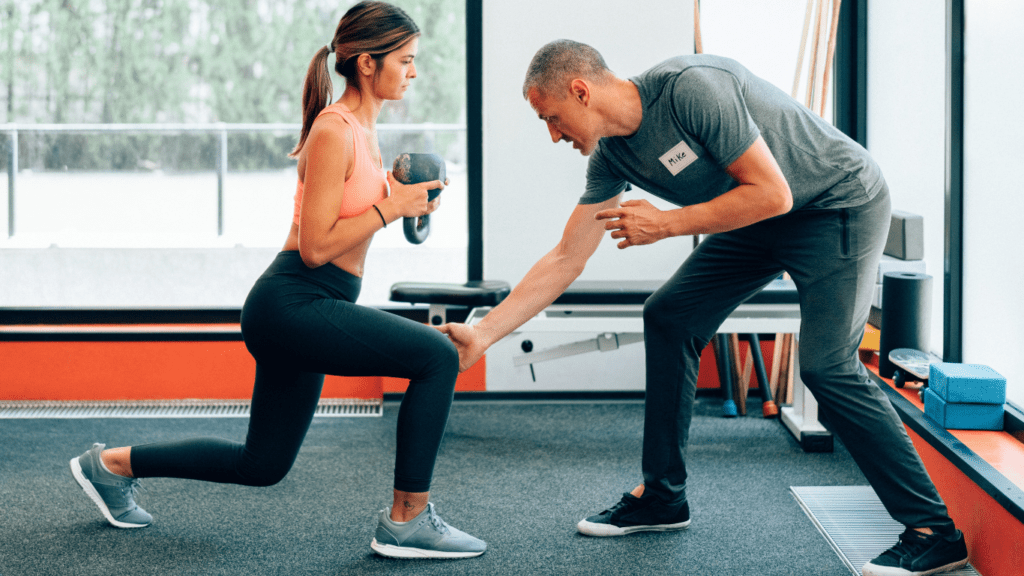Every athlete is unique, and a one-size-fits-all training plan just doesn’t cut it when it comes to unlocking true potential. I’ve seen firsthand how tailoring workouts to individual needs can make all the difference in achieving peak performance. Personalization isn’t just a buzzword—it’s the key to maximizing gains and minimizing setbacks.
Understanding The Importance Of Personalization In Training
Every athlete possesses unique physical attributes, performance goals, and recovery needs. A well-personalized training plan reflects these individual characteristics, addressing gaps while leveraging strengths. Generic routines often neglect specific demands, limiting improvement opportunities and increasing injury risks.
Personalized training considers performance metrics like endurance, strength, and flexibility. By using data from fitness tests or past performances, I identify areas requiring tailored adjustments. For instance, athletes needing faster sprint times might focus on explosive power-building exercises, while endurance athletes could include longer aerobic sessions.
Goal specificity drives progress. An athlete training for a marathon benefits from a vastly different plan than one preparing for a weightlifting competition. I ensure each plan aligns with the desired outcomes, balancing intensity, duration, and recovery phases to avoid overtraining.
Adaptability ensures sustained growth. Factors like:
- progression levels
- injury history
- schedule variations
shape adjustments over time. For example, I revise programs if an athlete’s performance plateaus or if lifestyle changes disrupt their routine. Personalized plans promote longevity and consistent advancements.
Assessing The Athlete’s Current Fitness Level
Creating a personalized training plan starts with understanding the athlete’s current fitness level. Conducting thorough assessments helps pinpoint baseline metrics, highlight key strengths, and address improvement areas.
Conducting Performance Tests
I use performance tests to establish accurate fitness benchmarks. These tests assess endurance, strength, flexibility, and speed, depending on the athlete’s sport. For example, runners might complete a VO2 max test to measure aerobic capacity, while weightlifters could perform a one-rep max test to gauge maximum strength. I review test results to identify current abilities and track measurable progress.
Evaluating Strengths And Weaknesses
I analyze the athlete’s physical and technical capabilities to evaluate strengths and weaknesses. For instance, a swimmer with strong endurance but poor stroke technique needs tailored drills to refine form. This evaluation helps prioritize areas for improvement without neglecting existing strengths, ensuring balanced development.
Identifying Training Goals
I align the training plan with the athlete’s short- and long-term goals. Preparing for a triathlon requires a different approach than improving sprint times or building overall strength. I collaborate with athletes to define measurable, time-bound objectives that factor in their fitness level and competition calendar.
Designing A Tailored Training Plan

Customizing a training plan begins with defining clear objectives and using targeted methods to address each athlete’s unique needs. A structured approach enhances performance and ensures sustainable progress.
Setting SMART Goals
- I begin by establishing Specific, Measurable, Achievable, Relevant, and Time-bound (SMART) goals. For example, an athlete preparing for a 10K race might set a goal to complete it in 45 minutes within the next three months.
- Specificity defines the purpose of training, while measurable metrics track progress.
- Goals remain achievable when they align with the athlete’s current fitness level, ensuring steady improvement without overexertion.
- Relevance keeps the focus on meaningful targets, enhancing motivation.
- Time-bound constraints foster accountability and align training timelines with performance objectives.
Choosing Training Methods And Exercises
I select methods and exercises based on the athlete’s sport, goals, and physical profile. For endurance athletes, interval runs and tempo workouts improve stamina, while sprinters benefit from plyometrics and high-intensity drills. Strength training plays a role across most plans, with variations like compound lifts or bodyweight exercises used depending on the athlete’s needs. Incorporating sport-specific movements sharpens technical skills and prevents imbalances. By diversifying exercises and adapting methods, I maintain engagement and address long-term development.
Balancing Intensity, Volume, And Recovery
Balancing training intensity, volume, and recovery ensures optimal performance gains while reducing injury risks. I adjust intensity by managing load, such as weight in strength training or pace in endurance activities. Volume, measured through sets, reps, or weekly mileage, aligns with the athlete’s fitness level and adaptability. Recovery periods, including rest days and active recovery sessions, are strategically scheduled to restore energy and facilitate muscle repair. A balanced training structure allows for consistent improvement without compromising long-term performance.
Monitoring Progress And Making Adjustments
Tracking athlete progress ensures training remains effective and aligned with their goals. Regular assessments and modifications help maintain steady improvements while addressing emerging challenges.
Using Data-Driven Insights
I prioritize using performance data to evaluate athlete progress. Metrics like heart rate, training load, and recovery time provide actionable insights. For example, monitoring power output during cycling sessions or pace during runs highlights improvements or potential stagnation. Data trends guide whether to intensify, maintain, or scale back workouts. Consistently analyzing this data ensures every adjustment optimizes athletic performance.
Incorporating Athlete Feedback
Athlete feedback plays a key role in personalizing adjustments. I encourage athletes to share experiences about training intensity, mental focus, and energy levels. For instance, if an athlete reports soreness exceeding acceptable levels, I revisit recovery protocols or adjust workout intensity. Open communication bridges the gap between planned objectives and real-world experiences, promoting a sustainable and effective training progression.
Addressing Individual Variations And Needs
Personalized training plans enhance athlete progress by recognizing and accommodating individual differences. These variations span across sports, age, gender, and physical conditions, requiring specific adjustments to maximize gains.
Adjusting For Different Sports And Disciplines
Training plans must align with the specific demands of each sport. Endurance sports like marathon running require a focus on aerobic capacity, long-distance runs, and pacing strategies. On the other hand, strength-based disciplines like weightlifting emphasize muscle hypertrophy, power output, and technique. I tailor workouts to match energy system requirements, movement patterns, and competition formats. For example, sprinters benefit from high-intensity intervals and explosive drills, while swimmers require stroke-specific strength training and pool endurance sessions. These customized approaches ensure efficiency and performance improvements.
Considering Age, Gender, And Physical Limitations
Athlete characteristics like age, gender, and physical restrictions influence training intensity, recovery, and adaptability. For adolescents, I prioritize gradual progression and motor skill development to prevent overtraining. Older athletes benefit from exercises focusing on mobility, recovery, and joint health. Gender-specific differences, such as hormonal variations, affect recovery and strength gains; for example, female athletes often focus on improving bone density and adjusting intensity during different menstrual phases. Physical limitations, like prior injuries or chronic conditions, dictate modifications such as reducing impact exercises or incorporating more rehabilitation-focused activities. This deliberate customization fosters safe, effective, and sustainable progress.
Leveraging Technology For Personalized Training
Technology transforms how athletes approach personalized training by providing detailed data and real-time insights. I use innovative tools to enhance customization, monitor performance, and drive maximum gains.
Using Wearable Devices And Apps
Wearable devices and fitness apps enhance data collection by tracking key metrics like heart rate, steps, and sleep patterns. Devices such as smartwatches and heart rate monitors provide continuous feedback, making it easier to adjust training on the go. Apps complement wearables by analyzing data trends, enabling more precise adjustments tailored to an athlete’s goals. For instance, recovery-focused apps evaluate rest quality, while performance-driven tools monitor workload and calorie expenditure. I rely on these technologies to create a dynamic feedback loop, ensuring training aligns with the athlete’s physical responses and daily activity levels.
Analyzing Metrics For Optimal Performance
Performance metrics determine whether training strategies are effective. By analyzing data such as VO2 max, lactate thresholds, and cadence, I can identify performance gaps and tailor exercises to target specific improvements. I also track training load and recovery metrics to balance intensity, maximizing results while minimizing fatigue. Live data accessibility through wearable platforms allows for real-time decision-making. For example, adjusting workout intensity when heart rate zones indicate overexertion prevents burnout. Metrics not only shape individual workouts but also influence long-term strategies, delivering sustainable, measurable progress.



 Lead Training Analyst
Lead Training Analyst
